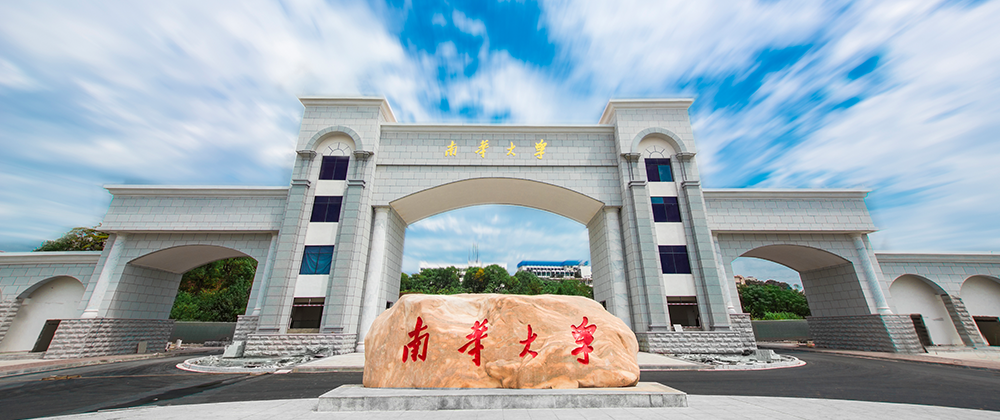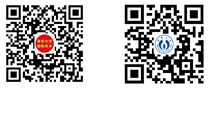University of South China (hereafter referred to as USC or the University), is a comprehensive public university with a history of about 60 years, co-funded by Ministry of Industry and Information Technology, State Administration of Science, Technology and Industry for National Defense, China National Nuclear Corporation, China Nuclear Engineering Group Corporation, and the People’s Government of Hunan Province.
The University was merged in 2000 by Hengyang Medical College, founded in 1958 and administrated by Hunan Province, Central South Institute of Technology, in 1959, and the 6th Nuclear Institute, in 1962, both administrated by the former Ministry of Nuclear Industry.
One of the yiben, or first tier, universities on the Mainland, China, USC enrolls students from the Mainland, Hongkong, Macao, Taiwan and other parts of the world. Since 2016, the University has been listed in “the National Project of Capacity Building for Universities in Western and Central China”, initiated by the Ministry of Education of the Country.
Situated in Hengyang, a historical and cultural city in central Hunan, China, with a total area of 200 hectares, USC comprises 26 colleges and schools, with more than 2,316 faculty members, and over 32,294 full-time students, of whom 28212,000 are undergraduates and 3836, master or doctor degree candidates. The 4 affiliated hospitals and 21 teaching hospitals, offer wide openings for internship to its medical students.
The University has been committed to advancing morals and nurturing talents to benefit citizens and strengthen the country, with the vision to become an education and research oriented institution with distinctive features -- top-notch in Hunan, high-ranked in China and well-known in the world.
Education
The University offers 77 undergraduate programs--in 9 major disciplines: philosophy, art, economics, law, literature, science, engineering, medicine, and management -- over 170 master programs, more than 18 doctorate programs and 3 postdoc stations. What is more, it is authorized to recommend excellent undergraduates as candidates for master or/and doctorate programs.
USC owns 12 state-level teaching platforms for featured majors, virtual simulation experiments, and engineering practice education, 20 basic laboratories and 31 specialized laboratories co-funded by central and local governments.
The University has become a pilot institution for “Outstanding Engineers” and “Outstanding Doctors” programs financed by the Ministry of Education. In addition, it is a national training base for students’ innovation and entrepreneurship, and the cradle for talents in nuclear, medical, and environmental-protection sectors in China. Over the past decade, USC has been awarded “Prominent Contribution in Cultivating Talents” by China National Nuclear Corporation.
Of the faculty over 1,150 are professors and associate professors, 88 enjoy special subsidies granted by the State Council for Young and Middle-aged Experts with outstanding achievements, and 220 have been honored with multi-level titles. Of the adjunct professors over 10 are members of Chinese Academy of Sciences and Chinese Academy of Engineering. Furthermore. USC has 14 state/provincial level innovation teams in education and research.
The University was listed in 2014 among “National Model Universities on Graduates Employment” by the Ministry of Education and has nurtured more than 160,000 high-quality graduates of whom the majority have grown to be backbones in their specific fields: members of the Chinese Academy of Sciences, governors and ministers, executive officials and professionals.
Research
USC has 77 institutes including the Base for Research on Nuclear Energy-oriented Economics and Management, the Center for Life Sciences, 4 state-level technology platforms, 10 national defense disciplines, 51 province- and ministry- funded research platforms and 58 national and provincial medicine-related specialties.
With the sharp distinctions in disciplines, the University has fostered a cluster of nuclear disciplines backboned by nuclear science and technology, a cluster of medical disciplines by clinical medicine, and a cluster of environmental protection disciplines by radiation protection.
Over the past years, the University has undertaken over 2,000 research programs financed by Project 863, Project 973, National Natural Science Foundation, and the Ministry of Science and Technology, and has been awarded 12 state-level prizes and over 300 province-level prizes for science and technology.
Outreach
The University has maintained a long-term co-op education relationship with more than 100 institutes, enterprises and higher institutions like Tsinghua University, Peking University, China National Nuclear Corporation, China Nuclear Industry Construction Group, State Nuclear Power Technology Company, China General Nuclear Power Group, and China Academy of Engineering Physics.
The University has been endeavoring to promote the transfer and application of research achievements, and has hatched more than 30 high-tech enterprises on and off the campus, like Sanli Corporation and RAMON.
The University offers services in decision-making, strategic planning, and technology, drafts industry standards, and trains more than 10,000 technical and management professionals and executives for local government, nuclear industry, medical institutes, environmental protection enterprises and so on.
The University acts positively in providing services in engineering and environmental protection testing, medical emergency in natural disasters, sudden epidemics and large scale events, by drawing on its National Nuclear Emergency Publicity and Training Base, National Nuclear Emergency Medical Rescue Team, Cooperative Innovation Center for Nuclear Fuel Cycle Technology and Equipment, Cooperative Innovation Center for Molecular Target New Drug, Engineering Technical Testing Center.
The four affiliated hospitals possess more than 8,000 beds and offer diagnosis and treatment for more than 2 million outpatients and more than 150,000 inpatients per year.
International Linkage
A member of International Cooperation Coordinating Council of China Atomic Energy Authority, International Atherosclerosis Committee, Asian Organization for Mycoplasmology, Asian ADS Accelerator Drive clean energy system and Nuclear Transmutation, the University keeps a close connection with International Atomic Energy Agency, World Health Organization, Educational Commission for Foreign Medical Graduates of USA, Institute of Climate and Energy Research (IEK-6) of Germany and other institutions and organizations, and hosts international seminars regularly.
The University has built up partnership with Cambridge University, University of South Wales, Auburn University at Montgomery, University of Canberra, Ukraine National Mining University and other foreign universities, and paid mutual summit visits regularly. More than 200 teachers and students have joined in exchange programs with these partners.
The University has undertaken more than 20 professional contract training projects from the Ministry of Commerce, the National Health and Family Planning Commission, and state-owned nuclear enterprises, dispatched excellent doctors for medicare and emergence in Zimbabwe and other African countries. Its international students come from more than 20 countries.
The University has long been committed to strengthening international communication and cooperation, improving internationalization of education and promoting its capacity of educational and outbound technical assistance.
(V.201611)





